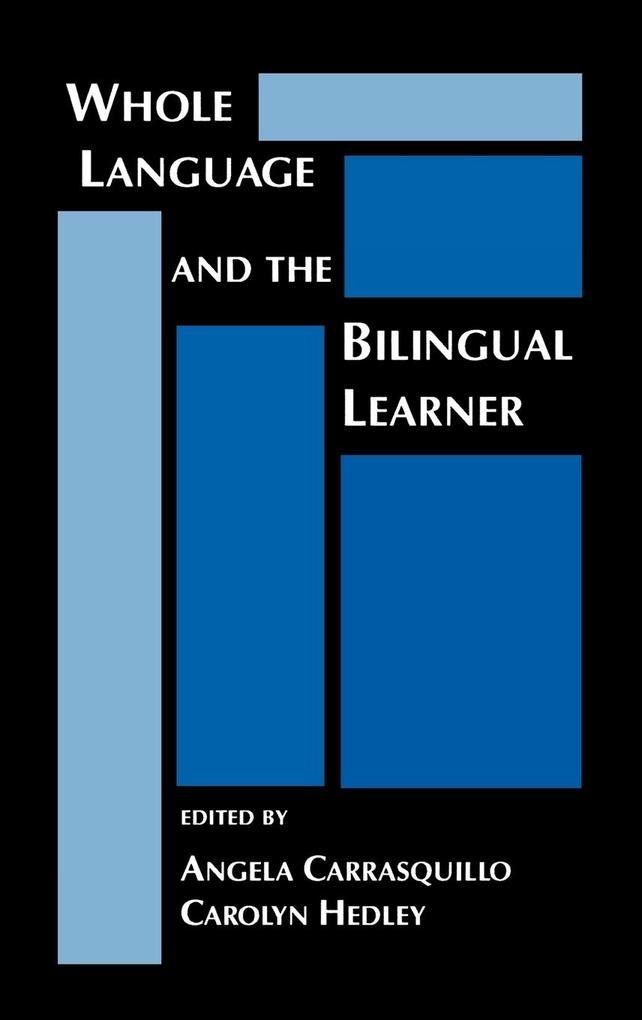
Zustellung: Di, 22.07. - Fr, 25.07.
Versand in 7 Tagen
VersandkostenfreiIn this book, authors mesh two philosophies about language: the whole language approach that is sweeping across reading/learning and current theory of language acquisition pervading the bilingual community. The thrust of most bilingual research is that the learner should learn in his own language using natural approaches and then learn English as a second language. Typically, much of the instruction in languages other than English have used rote methods. This book shows how one would learn using an integrated and literacy-based approach to language acquisition and development.
Inhaltsverzeichnis
Introduction
CONTEXT FOR WHOLE LANGUAGE BILINGUAL LEARNING
Whole Native Language Instruction for Limited-English-Proficient Students
Communicative Competence and Whole Language Instruction in the Foreign Language Secondary School Classroom
Literacy, Language, School and Community: A Community-Centered View
TEACHING STRATEGIES AND ASSESSMENT FOR WHOLE LANGUAGE BILINGUAL LEARNERS
Literature, Integrated Language Arts, and the Language Minority Child: A Focus on Meaning
Promoting Voluntary Interest in Literature: A Program That Works
Reading Strategies: A Discussion/ Demonstration with Connie Weaver
Serious Flaws in Written Literacy Assessment
Natural Assessment in Whole Language Classrooms
Evaluating Early Literacy Knowledge by Analyzing Children's Responses to Storybooks During Home Read-Alouds
Reducing the Risks Through Early Intervention
A Whole Language Approach to Reading and the Special Learner
BILINGUALWHOLE LANGUAGE INSTRUCTION: POLICIES AND BLUEPRINTS
Theories for Whole Language: A Cross-Cultural Perspective
Bilingual Education: Reform for the 1990s
A Model Program: Regents' Policy Paper on Bilingual Education
EPILOGUE: CHALLENGES AND CAVEATS
Whole Language: Revolution or Evolution?
Author Index
Subject Index
CONTEXT FOR WHOLE LANGUAGE BILINGUAL LEARNING
Whole Native Language Instruction for Limited-English-Proficient Students
Communicative Competence and Whole Language Instruction in the Foreign Language Secondary School Classroom
Literacy, Language, School and Community: A Community-Centered View
TEACHING STRATEGIES AND ASSESSMENT FOR WHOLE LANGUAGE BILINGUAL LEARNERS
Literature, Integrated Language Arts, and the Language Minority Child: A Focus on Meaning
Promoting Voluntary Interest in Literature: A Program That Works
Reading Strategies: A Discussion/ Demonstration with Connie Weaver
Serious Flaws in Written Literacy Assessment
Natural Assessment in Whole Language Classrooms
Evaluating Early Literacy Knowledge by Analyzing Children's Responses to Storybooks During Home Read-Alouds
Reducing the Risks Through Early Intervention
A Whole Language Approach to Reading and the Special Learner
BILINGUALWHOLE LANGUAGE INSTRUCTION: POLICIES AND BLUEPRINTS
Theories for Whole Language: A Cross-Cultural Perspective
Bilingual Education: Reform for the 1990s
A Model Program: Regents' Policy Paper on Bilingual Education
EPILOGUE: CHALLENGES AND CAVEATS
Whole Language: Revolution or Evolution?
Author Index
Subject Index
Produktdetails
Erscheinungsdatum
01. Januar 1993
Sprache
englisch
Seitenanzahl
242
Autor/Autorin
Angela Carrasquillo, Carolyn Hedley
Verlag/Hersteller
Produktart
gebunden
Gewicht
531 g
Größe (L/B/H)
240/161/18 mm
ISBN
9780893917678
Entdecken Sie mehr
Bewertungen
0 Bewertungen
Es wurden noch keine Bewertungen abgegeben. Schreiben Sie die erste Bewertung zu "Whole Language and the Bilingual Learner" und helfen Sie damit anderen bei der Kaufentscheidung.








